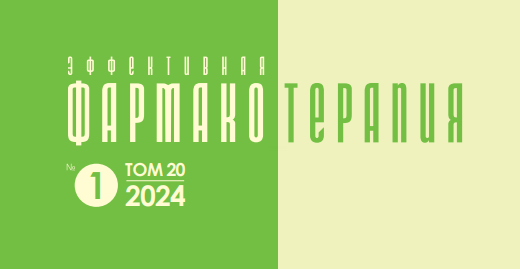
Experts discuss role of vaccination and immunocorrection therapy in infectious disease control

Leading experts discussed modern approaches to the prevention and treatment of infectious diseases and their complications at the Academician V.I. Pokrovsky Russian Congress on Infectious Diseases titled “Infectious Diseases in the Modern World: Evolution, Current and Future Threats.”
According to Aleksander Sinopalnikov, Dr. habil. med., Professor, Head of Pulmonology Department, Russian Medical Academy of Continuous Professional Education, pneumococcus is still the main reason behind acute infectious diseases, implicated in up to 70% of cases of community-acquired pneumonia requiring hospitalization for medical reasons in adults. In about 20% of such cases, pneumonia has secondary pneumococcal bacteremia as a complication, leading to almost 30% of hospital mortality.[1]Mr. Sinopalnikov claims that pneumococcal infection causes the absolute majority of infectious deaths in developed and some developing countries.
Children under 5 and adults over 65 are the most vulnerable to pneumococcal infection. Since 2014, the pneumococcal vaccine has been a part of the Russian National Vaccination Schedule (RNVS) for children. Since then, more than 37 million doses of the 13-valent pneumococcal conjugated vaccine Prevenar® 13 have been supplied for the RNVS. These years have seen tangible progress in reducing infant mortality[2] from pneumonia as compared to the pre-vaccine period: infant mortality has decreased by 56%; 55% epidemiological efficiency of immunization against pneumococcal infection has been demonstrated for community-acquired pneumonia of any etiology in children vaccinated timely in their first year of life.
However, according to Aleksander Sinopalnikov, older age and concomitant cardiovascular, metabolic and pulmonary diseases significantly increase the risk of pneumococcal infections.[3]
The speaker shared data on how leading mortality causes changed in developed and developing countries from 2010 to 2019; the data showed that the number of deaths from lower respiratory tract infections decreased by half a million during this period, which, according to the professor, was attributable to the extended vaccination strategy[5].
Acute respiratory diseases, their prevention and therapy was another topic discussed at the congress. Experts reminded people of how important it was to carefully select immunocorrection therapy when treating infectious diseases, due to the complex nature of our immune system.
Oleg Kalyuzhin, Dr. habil. med., Professor, Department of Clinical Immunology and Allergology, N.V. Sklifosovsky Institute of Clinical Medicine, FSAEI HE I.M. Sechenov First MSMU MOH Russia, spoke on the dual nature of the innate immune response, equally dangerous for the body if it was too strong or too weak. Excessive immune response creates the so-called neutrophil traps, which, according to studies[6], result in a more severe course of respiratory diseases such as influenza, pneumonia, COPD, asthma etc.
This particular feature of immunity signifies the need to select such drugs to combat respiratory diseases that can enhance key mechanisms of defense against infection as well as suppress an excessive immune response.
Oleg Kalyuzhin mentioned Polyoxidonium®:
1 Nikolay Briko, Vladimir Korshunov, Kirill Lomonosov PNEUMOCOCCAL DISEASE IN THE RUSSIAN FEDERATION: STATE OF THE ART // Annals of the Russian Academy of Medical Sciences (RAMS). 2021. No. 1.
2 Namazova-Baranova L.S., Fedoseenko M.V., Vishneva E.A., Selimzyanova L.R., Chemakina D.S. Theoretical foundations and actual results: review of materials on preventive vaccination of pneumococcal infection in the world. Pediatric pharmacology. 2018; 15 (1): 58-74. doi: 10.15690/pf.v15i1.1844
3 Shea KM, Edelsberg J, Weycker D, Farkouh RA, Strutton DR, Pelton SI. Rates of pneumococcal disease in adults with chronic medical conditions. Open Forum Infect Dis. 2014 May 27;1(1):ofu024. doi: 10.1093/ofid/ofu024. PMID: 25734097; PMCID: PMC4324183.
4 Shea KM, Edelsberg J, Weycker D, Farkouh RA, Strutton DR, Pelton SI. Rates of pneumococcal disease in adults with chronic medical conditions. Open Forum Infect Dis. 2014 May 27;1(1):ofu024. doi: 10.1093/ofid/ofu024. PMID: 25734097; PMCID: PMC4324183.
5 GBD 2019 Antimicrobial Resistance Collaborators. Global mortality associated with 33 bacterial pathogens in 2019: a systematic analysis for the Global Burden of Disease Study 2019. Lancet. 2022 Dec 17;400(10369):2221-2248. doi: 10.1016/S0140-6736(22)02185-7. Epub 2022 Nov 21. PMID: 36423648; PMCID: PMC9763654.
6 Meegan JE, Yang X, Coleman DC, Jannaway M, Yuan SY. Neutrophil-mediated vascular barrier injury: Role of neutrophil extracellular traps. Microcirculation. 2017;24(3):10.1111/micc.12352.; Law SM, Gray RD. Neutrophil extracellular traps and the dysfunctional innate immune response of cystic fibrosis lung disease: a review. J Inflamm (Lond). 2017 Dec 28;14:29; Papayannopoulos V. Neutrophil extracellular traps in immunity and disease. Nat Rev Immunol. 2018 Feb;18(2):134-147; Toussaint M, Jackson DJ, Swieboda D, Guedan A, Tsourouktsoglou TD, Ching YM, et al. Host DNA released by NETosis promotes rhinovirus-induced type-2 allergic asthma exacerbation. Nat Med. (2017) 23:681–91; NIAID Laboratory of Bacteriology


